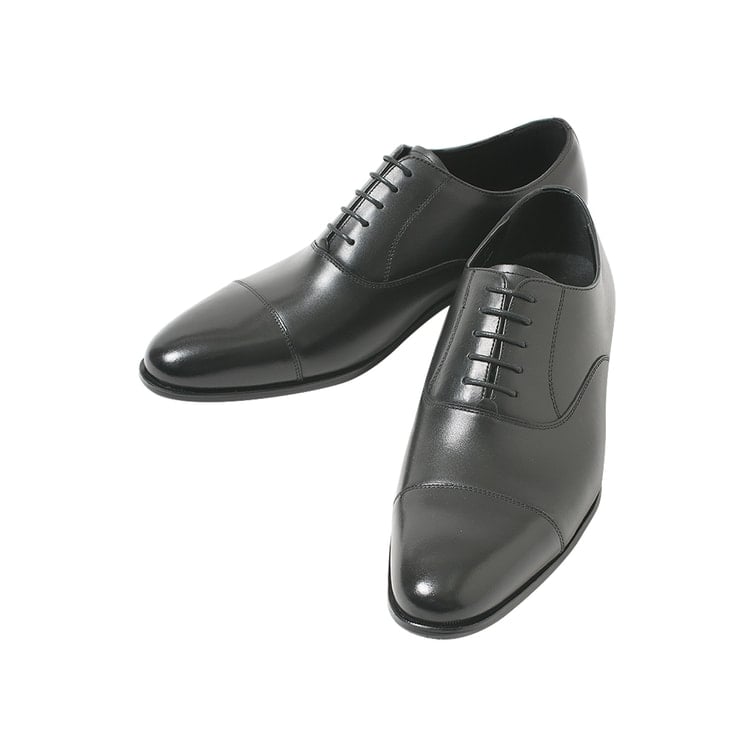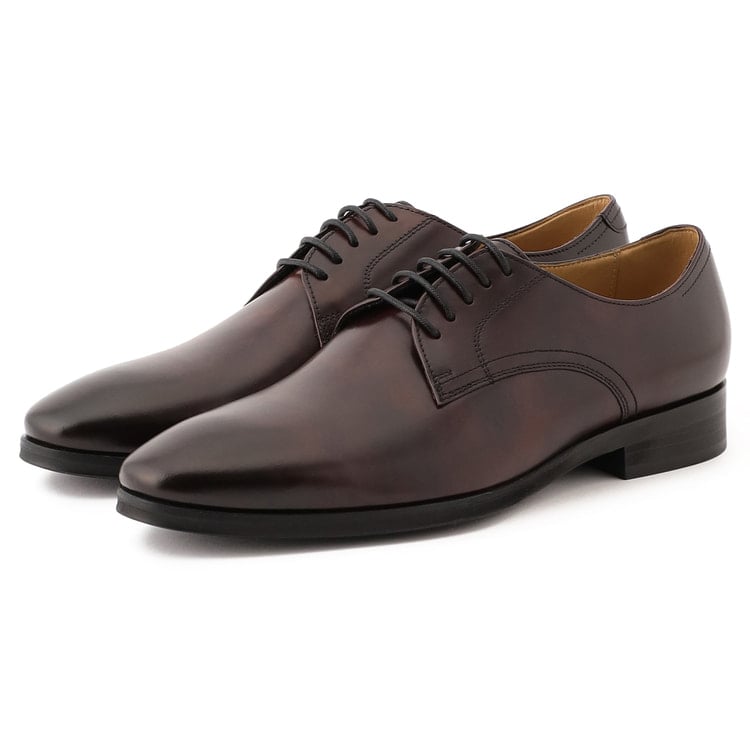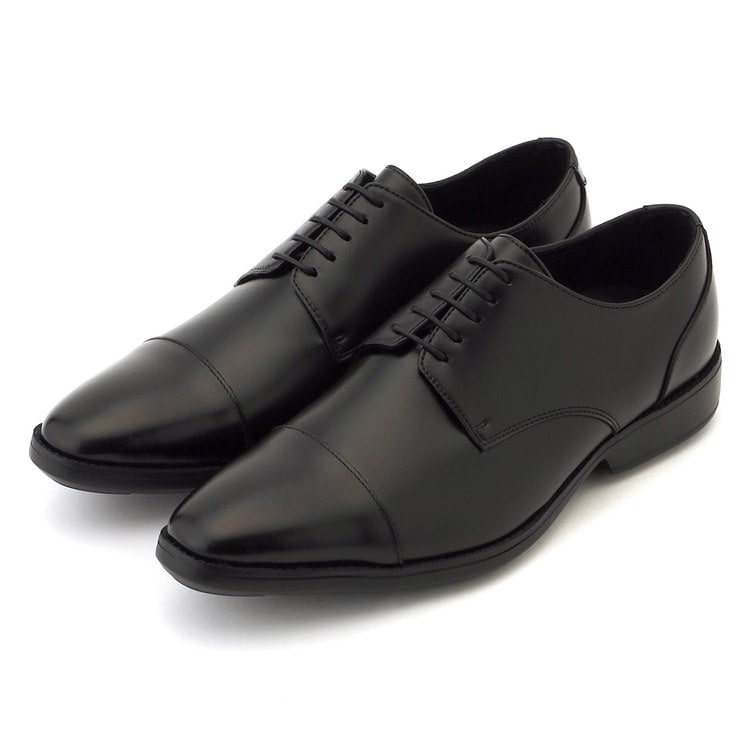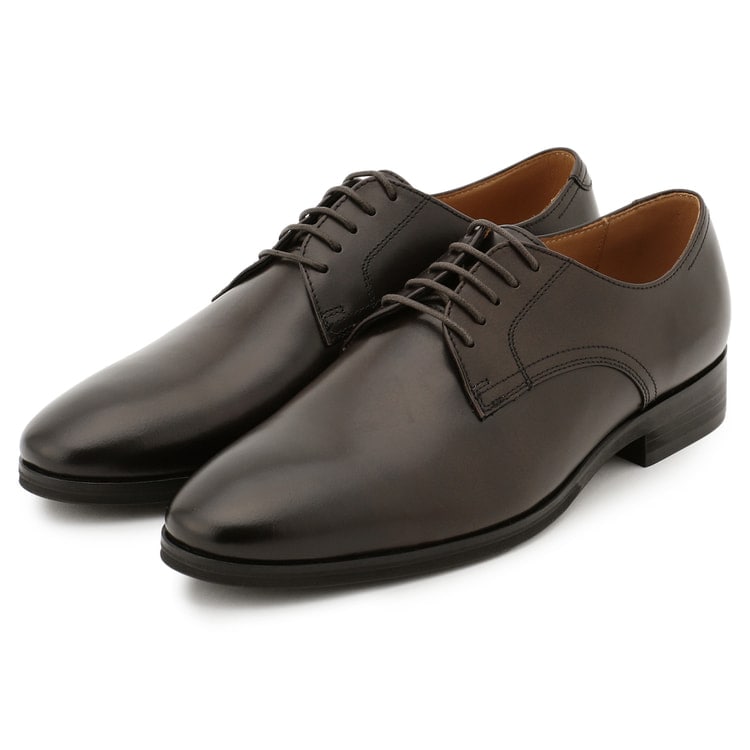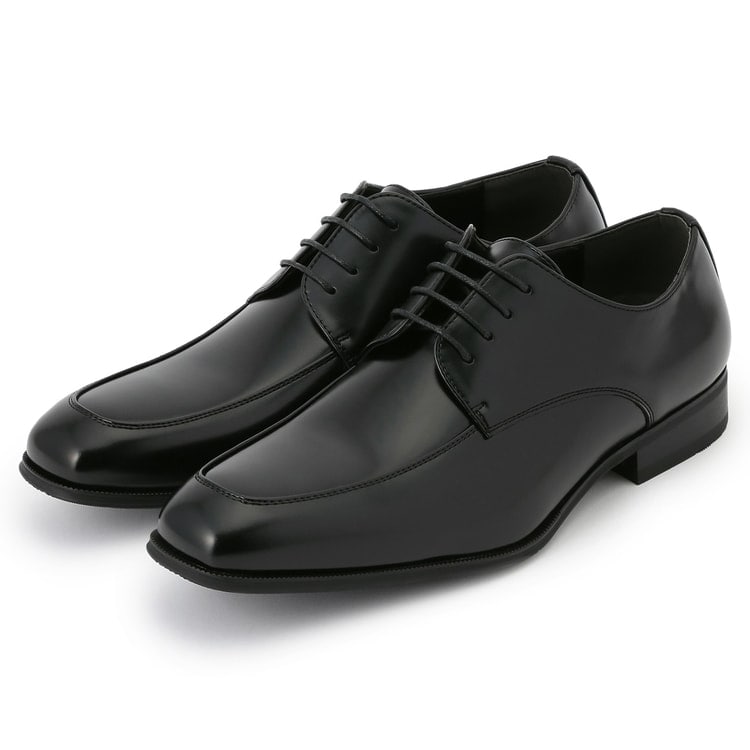Leather shoes are worn at various occasions. There are many different types so it might be difficult to choose the right ones – it all depending on the situation. Here, we introduce how to choose the right leather shoes by style and occasion, as well as how to maintain them.
Leather shoes styles - difference between Oxford and Derby style shoes -

There are 2 styles of leather shoes with laces; Oxford and Derby. These 2 styles are different in detail and that makes a drastic difference.
Here are the differences between the two types of leather shoes with laces, their characteristics and uses.
■Oxford (Balmoral) style
This style is called ‘Oxford’ and the part where eyelets are called ‘facing’. It features closed lacing so the facing is integrated with the upper of the shoe and so doesn’t open wide. It’s a more formal style than the other.
The history of the Oxford design goes back to the British royal family. It’s historical and the design is simple, clean and gives a solid impression. Therefore, it’s suitable for formal occasions such as weddings and formal events.
■Derby (Blucher ) style
Derby style has quarters sewn on top of the vamp, features open lacing so that the facing can be opened widely. The design is more casual compared to Derby style.
Because facing opens, it’s easy to put on and off and the fit can be adjusted with the lace. It’s suitable if you’re in sales or business.
* These products are available at AOKI JAPAN Online Store (https://www.aoki-style.com/). You will be redirected to another website.
‘Himeji Leather’, quality leather products are processed and sold in Himeji City, Hyogo Prefecture.
It’s highly durable, scratch-resistant and its texture and luster is outstanding.
Leather Shoes Types -Difference in the Toe Area-

Let's take a look at the differences in design based on the shape of the toe area. Below are 3 typical designs of leather shoes, each with different levels of formality and appropriate occasions.
Although these days the rules are not so strict, its good to keep in mind the differences in design.
■Straight tip
Straight tip shoes have a straight line on the upper area. The black straight tip is a formal item and can be used for weddings and formal events. While Oxford style is formal, Derby style can be worn more casually, as business shoes.
■Plain toe
Plain toe is a smooth leather shoe with no design on the upper part. They can be worn with formal wear to some extent, unless it’s a morning suit. It can be worn at business occasions as well.
In general, plain-toes tend to be Derby style. Plain toe Oxford is more formal but more expensive since it requires a higher level of shoe-making skill.
■U-tip
U-tip is a leather shoe with a U-shaped piece of leather (tip) sewn into the upper part using Mocha stitching. If it's V-shaped, the leather piece is called a V-tip in Japan. These are all Japanese terms, in Europe and the United States, they are called Oxford. They are originally considered casual shoes but they are popular as business shoes in Japan.
They are not suitable for formal occasions but they are good for a wide range of casual occasions and go with a jacket and pants style.
* These products are available at AOKI JAPAN Online Store (https://www.aoki-style.com/). You will be redirected to another website.
How to choose the right size shoes

Leather shoes generally have some extra room at the toe so even if the shoe size is almost same size as your foot, it should fits comfortably.
As a general guideline, we recommend that you choose leather shoes approximately 1.0 to 1.5 cm smaller than your sneaker size that you usually wear.
How to make your leather shoes last longer
・To prevent staining, spray water repellent on your new shoes.
・Let the shoes rest for one to two days after worn.
・Use a shoehorn when putting on to prevent damage and tie the laces tightly.
・Use shoe trees to store your shoes when you are not wearing them.
Instructions for leather shoe maintenance
■What you need
Shoe brush, shoe cleaner, emulsified shoe cream,
soft cloth (a few sheets), water repellent spray
■5 steps to take care of your leather shoes (calf)
Step 1 Remove dust and dirt lightly using a brush or cloth (remove the laces).
Step 2 Apply a small amount of cleaner and wipe lightly to remove dirt and old shoe polish
※ Applying cleaner directly on the shoes may cause stains.
Step 3 Apply a small amount of shoe cream (about 1cm length for a pair of shoes) in a thin layer.
※ Pick the same or a slightly lighter color shoe cream.
Step 4 Once the cream is dried use a new brush (not the one from step 1)
to brush thoroughly and polish with a cloth.
※ To add more shine, polish with stockings afterwards.
Step 5 Apply water repellent spray to finish.
※For pasted-leather (shiny leather) shoes, only a dry wipe is sufficient
(applying cream can remove the leather shine).
What to do If your shoes get wet in the rain
Leaving your shoes wet can cause them to lose their shape and crack.
① Lightly wipe off any water droplets or dirt.
② Wrap a newspaper with tissue and stuff the shoes tightly up to the toes to absorb any water.
③ Leave the shoes in a well-ventilated shaded area to dry thoroughly.
※Keep the shoes standing to dry the sole.
※Do not expose the shoes under direct sunlight and do not use a hair dryer, this may harden the leather and can cause cracking.
④ Once the shoes are dried, remove any dust and dirt and apply shoe or leather cream.
Shoes that supports the feet of businessmen are an important item that should match with a suit, well-designed, and of course, easy to walk in. Don’t forget to pay attention to suits as well as to shoes.
AOKI offers a wide range of shoes suitable for formal and casual business occasions.
* These products are available at AOKI JAPAN Online Store (https://www.aoki-style.com/). You will be redirected to another website.




